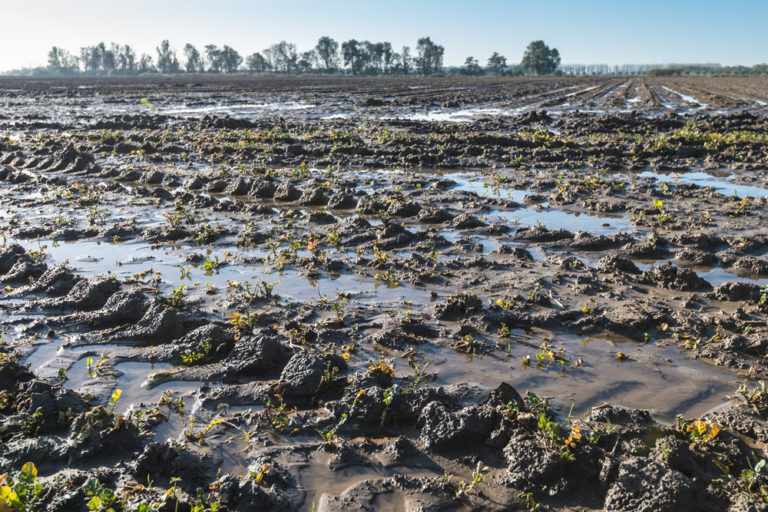Farmers Have A Love/Hate Relationship With Spring In North Dakota

Poets have long appreciated the four distinct seasons of the upper plains. Summers can be punishingly hot, followed by cool, serene autumns that lead into legendary winters that seem to stretch on forever. Spring does come eventually, though, and those poets have nothing on North Dakota farmers as they express their feelings for the state’s meteorological transitions. There are many words used to describe March, April and May in North Dakota, and the most accurate might be “challenging.” Especially for those who make a living in agriculture.
Here are a few characteristics that make spring in North Dakota a little different than anyplace else, brought to you by the ag team at First United Bank:
Do You Feel Lucky?
Choosing a coat during a North Dakota spring is a lot like going to the casino – you never know how it’s going to turn out, and if you guess wrong, you can look like a fool. Anybody who lives this far north in the United States can tell you about a frigid spring morning that transformed into a scorching afternoon – and how that left them toting around their winter coat like a malformed piece of luggage. Obviously, that kind of uncertainty impacts how farmers plan their workday, not just their wardrobe.
In Like A Lion, Out Like A Meaner Lion
North Dakota springs generally render age-old idioms useless. Just because the month of March began with a raging snowstorm doesn’t mean it can’t end with one too, does it? Three weeks of record high temperatures? Don’t kid yourself. Even the natives get tricked into spring fever, only to be blindsided by an epic blizzard that sets the whole process back by two weeks. If the groundhog lived in North Dakota, he’d just skip the whole ordeal and rent a condo in Palm Springs until May (and even then…).
Water, Water Everywhere
In a state as flat as North Dakota, water acts a little differently. For instance, you don’t need to live near a river to experience flooding on your property. In fact, the term “overland flooding” was seemingly invented specifically for those living in the upper Midwest, with some farmers keeping a small boat handy each spring just to get in and out of their driveway. Every year brings a test in patience as the rich, muddy soil slowly sheds four months of snow and another month of rain. Wimpy tractors have no place here. Only the strong survive.
Hope Springs Eternal
On the other hand, there’s nothing quite like the smell of the first 50-degree morning of the year. It smells new, and as the snow finishes melting there is a sense of newness on the landscape as well. What was once covered in an impenetrable sheet of snow and ice is revealed again. Farmers in places with two seasons (“wet” and “dry”) never get to experience the feeling of rebirth that comes with spring in North Dakota, and that’s a shame, because it makes everything else worth it.
One of the keys to successfully navigating North Dakota’s turbulent springs is preparation. Rather than waiting around for the weather to turn, experienced farmers use the first few months of the year to meet with their business team. In the upper Red River Valley, those get-togethers often involve First United Bank. It helps, you see, to choose a bank that sees each spring as an opportunity for your farm to grow – a bank that’s already been through more than 130 North Dakota springs and made the most of each one.
Farming isn’t for everyone, and farming in North Dakota is for an elite few. But those who brave the winter are rewarded with three other incredible, unique seasons that make agriculture something special and each day worth looking forward to. Here’s to spring in the heartland – it’s always worth the wait.